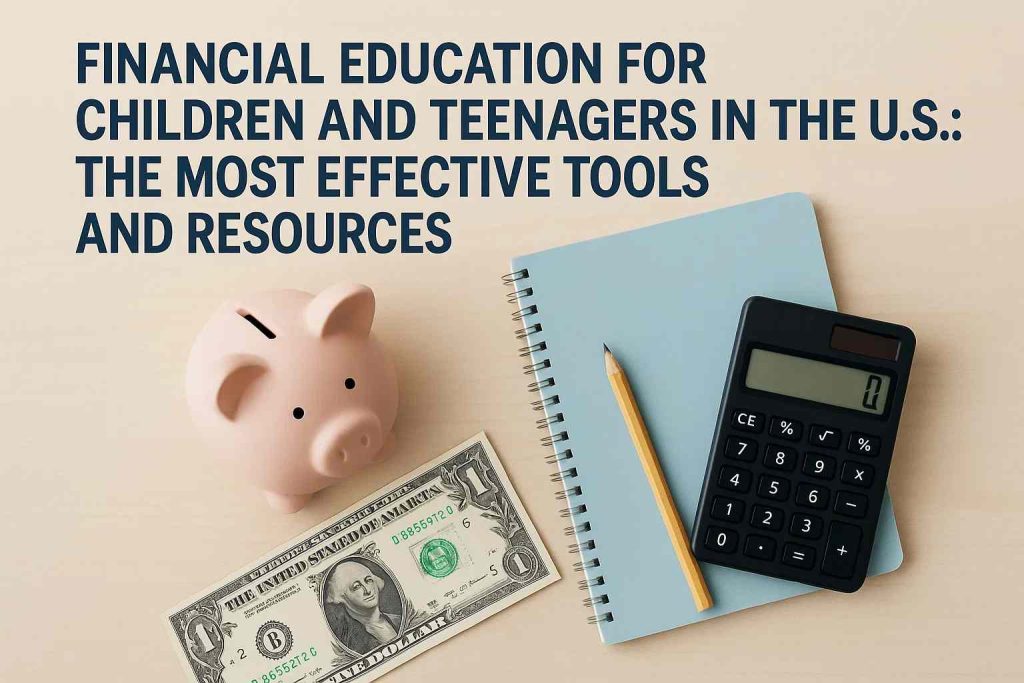Financial education has become an essential part of raising and preparing children and teenagers for adulthood in the United States. In a world where personal finances influence nearly every aspect of daily life, understanding how to save, invest, and manage money responsibly is no longer optional.
Many young people graduate from high school or even college without a solid foundation in money management, which can lead to unnecessary debt, poor credit scores, and financial stress later in life. This makes it critical to start financial education early, providing young generations with the tools they need to build a secure future.
The role of schools in financial literacy

Schools play a vital role in introducing financial education to students. Across the U.S., many states have begun implementing mandatory financial literacy courses, covering topics such as budgeting, credit, debt management, and the basics of investing. This integration ensures that every student, regardless of family background, receives some level of training in money management before graduation.
However, challenges still exist. Some school districts face funding limitations, leading to a lack of qualified instructors or outdated resources. To overcome these barriers, many schools have partnered with external organizations and nonprofits that specialize in financial education.
Technology as a learning ally
Technology has transformed financial education for young learners, making it more interactive and personalized. Apps designed specifically for children and teenagers allow them to track allowances, set savings goals, and understand the consequences of spending decisions in real time. These digital tools often use gamification strategies, where progress and achievements are rewarded, keeping learners motivated and engaged.
In addition to apps, online platforms provide access to a wealth of free content such as videos, tutorials, and budgeting tools. Families can use these resources to supplement classroom lessons or introduce financial concepts at home. For example, platforms like Investopedia offer beginner-friendly guides that can help older teenagers grasp complex topics such as compound interest or stock investing.
Parental guidance and modeling behavior
While schools and digital resources are effective, parents remain the most influential figures in shaping children’s financial behavior. Children often observe how their parents handle money long before they are formally taught about finances. Simple practices like involving kids in household budgeting or encouraging them to save a portion of their allowance can instill lifelong habits of financial responsibility.
Parents can also encourage their children to open savings accounts or, for older teens, starter checking accounts. By discussing topics such as interest rates, credit cards, and debt management at home, parents create an open dialogue about money, reducing the stigma or anxiety often associated with financial conversations.
Building confidence through experiential learning
Experiential learning plays a crucial role in teaching financial literacy to young people. Allowing children and teenagers to make their own financial choices, even small ones, teaches responsibility and accountability. For example, giving a child a weekly allowance and encouraging them to plan their spending helps them understand opportunity costs and the value of saving.
Some communities also offer programs like simulated stock market challenges or entrepreneurship workshops, giving students a taste of investing and business management. These hands-on experiences build financial confidence in a way that theoretical lessons cannot.
Community programs and nonprofit initiatives
Beyond schools and families, community organizations and nonprofits contribute significantly to financial education efforts in the U.S. These groups often target underserved populations, ensuring that financial literacy reaches children and teenagers who may lack access to quality resources.
Many nonprofits partner with local banks and credit unions to create programs where students can practice financial decision-making in controlled environments. Such collaborations often result in youth-focused banking products, like accounts with no fees or special saving incentives, that encourage teenagers to take their first steps into independent financial management.
